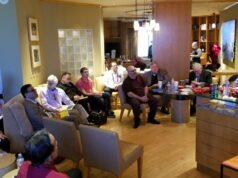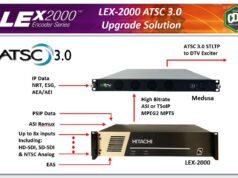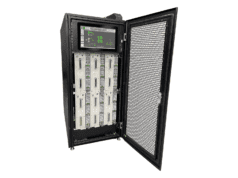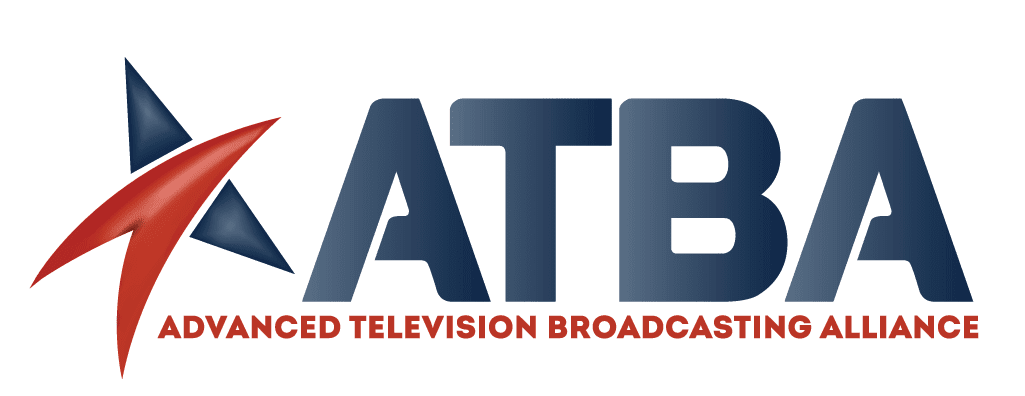With a global market share for ATSC 3.0 transmitters approaching 90 percent, Rohde & Schwarz demonstrates why its Next Gen TV solution for TV transmitters optimally addresses broadcasters’ need for flexibility, operational efficiency and reliability.
“Next Gen TV is bringing wide-scale terrestrial broadcasting into the IP age,” so says Manfred Reitmeier, Vice President Transmitter and Amplifier Systems at Rohde & Schwarz. “At Rohde & Schwarz, we see a critical role supporting broadcast network operators in their transition by supplying the world’s first software-based Next Gen TV system and the world’s most field-proven solution.

Reitmeier was responding to news that Rohde & Schwarz has carved out almost 90 percent share of the global ATSC 3.0 market, with more than 60 R&S ATSC 3.0 transmitters already in commercial operation in South Korea. Currently, the company is supporting multiple customers throughout North America and Korea. During the US spectrum repack auction Rohde & Schwarz provided hundreds of ATSC 3.0 ready transmitters.
Next Gen TV (ATSC 3.0) offers broadcast network operators a greater degree of flexibility in their service offerings, since it is designed to evolve together with broadcasters’ future operational roadmap. This advanced technology addresses broadcasters’ needs for flexibility, being totally software-based. It enables network operators to leverage the full capabilities of the ATSC 3.0 standard and flexibly respond to future signal processing requirements.
Rohde & Schwarz transmitters fully support ATSC 3.0 core features, including multiple physical layer pipes (PLP), multiple subframes and single frequency networks (SFN) capabilities for optimal spectrum utilization. Also, it supports ATSC 3.0 layered division multiplexing (LDM), helping network operators maximize coverage in different reception scenarios, including fixed and mobile reception.
With the transition to Next Gen TV, operators can extend their coverage via Single Frequency Networks. The coverage of existing high-power sites can be efficiently extended by adding lower power auxiliary sites and generate a single frequency network. These auxiliary sites need efficient ways to feed signals and an IP-based standard such as Next Gen TV meets this requirement. The R&S RelayCaster solution works in tandem with the R&S Next Gen TV transmitters in this application: it enables public internet connection to be used for input feed to the transmitters – dedicated and expensive links are not necessary anymore. This helps operators to reduce infrastructure costs, while leveraging the SFN coverage advantage.
In the US, broadcasters are dynamically moving towards ATSC 3.0, while in South Korea the ATSC 3.0 roll-out took place for the Olympic Winter Games in 2018.The public service broadcaster in South Korea, Korea Broadcasting System (KBS), has operated ATSC 3.0 as a ultra-high definition (UHD) service since 2017.
”KBS and Rohde & Schwarz have worked together developing our new terrestrial UHD service based around R&S THU9 TV transmitters since 2014,” explains Dr. Sungho Jeon Ph.D., Manager, Department of Media Distribution Management at KBS. “Today most of South Korea’s ATSC 3.0 TV transmitter sites operate R&S THU9 transmitters – not only KBS, but also other broadcasters in Korea. For three years, the system has been operating and KBS is very happy.”
Also Rohde & Schwarz can demonstrate how coverage extension for operators of classic ATSC stations is supported by the company‘s ATSC translator solution. This innovative solution enables using the signal from a parent transmitter to ‘translate’ to another RF channel. R&S ATSC translators simplify extension of the ATSC coverage significantly, making the need for costly TS feeding infrastructure to the LPTV transmitter station obsolete.











